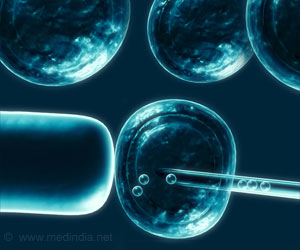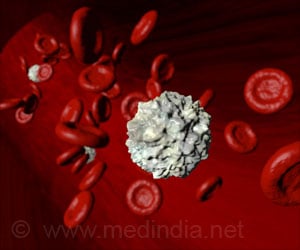A new technique helps to isolate cancer stem cells which are the root cause of many hard-to-treat metastasized cancers.

‘Isolating aggressive cancer stem cells that make many metastasized cancers heard to treat may help develop new drugs to target this group of cells.’





"There is a small population of cancer cells that is much more aggressive than others -- cancer stem cells," Lee said. "These give rise to secondary tumors, even after the primary tumor has been successfully treated. The cells are notoriously difficult to find, let alone eradicate." Lee and his colleagues used a two-step process to sort through a library of 40,000 chemical compounds, looking for any that would selectively bind to breast cancer stem cells, isolating them from standard breast cancer cells.
The screening process identified five compounds, called ligands, that bind specifically to cancer stem cells, and the researchers selected one of them for closer study. The results were published in Chemistry -- A European Journal.
While similar methods have been used to separate cancer cells from normal healthy cells, Lee said the results mark the first demonstration of a technique that separates cancer stem cells from other cancer cells.
"We have approached this problem in a novel way, and for the first time have isolated a ligand that binds specifically to cancer stem cells," he said.
Advertisement
Stem cells are in various tissues in the body, and unlike regular cells, which have a limited lifespan, they can divide and renew themselves for long periods of time. They are also unspecialized, meaning that when one of them divides, the resulting cells can transform into another cell type. For example, stem cells in bone marrow can become bone, fat or blood cells.
Advertisement
Such secondary tumors can appear years later and are often more aggressive and harder to treat.
Challenges of Targeting Cancer Stem Cells
Many researchers, including Lee, believe killing cancer stem cells in a primary tumor should eliminate it by removing its renewable source of cancer cells, while also preventing the genesis of new cancers. There are currently no clinically proven drugs directed at cancer stem cells, he said.
The challenge: You have to find cancer stem cells before you can kill them.
"Research in this field has been difficult because specifically targeting cancer stem cells has been hard," Lee said. "There are limited methods for even detecting these cells."
The Experiments
Using available data on physical factors that differentiate cancer stem cells, Lee’s group incubated a mixture of both breast cancer stem cells and non-stem cancer cells together with 40,000 tiny plastic beads, each coated with multiple copies of one ligand.
After two screenings, Lee identified a particular ligand that he believed bound to only the cancer stem cells and used it to separate them from non-stem cancer cells. To confirm this, he injected each set of cells into mice and monitored the animals for tumor growth.
"In the cancer stem cell group, we got rapid tumor growth and bigger tumor size than we saw in the regular cancer cell group," Lee said. "We also saw even more cancer stem cell activity, which helps explain why these tumors were more aggressive.
"It was also exciting that we didn’t see any tumor growth in the group that received the cancer cells from which the cancer stem cells had been removed. This data supports the notion that if you eliminate cancer stem cells, you get tumor degeneration."
Possible Applications
Lee envisions the ligands he identified being used in multiple ways, including therapeutics, diagnostics and imaging.
"The simplest version of a therapeutic would be attaching a toxic agent to the ligand, which would then bind selectively to and kill cancer stem cells," Lee said. "It would also be beneficial to adapt these ligands into imaging agents, which would light up the cancer stem cells in a patient and help determine the best treatment options.
"The most immediate application, though, will likely be using our technique to isolate cancer stem cells for further study in the lab, as well as a drug development tool."
Source-Eurekalert














